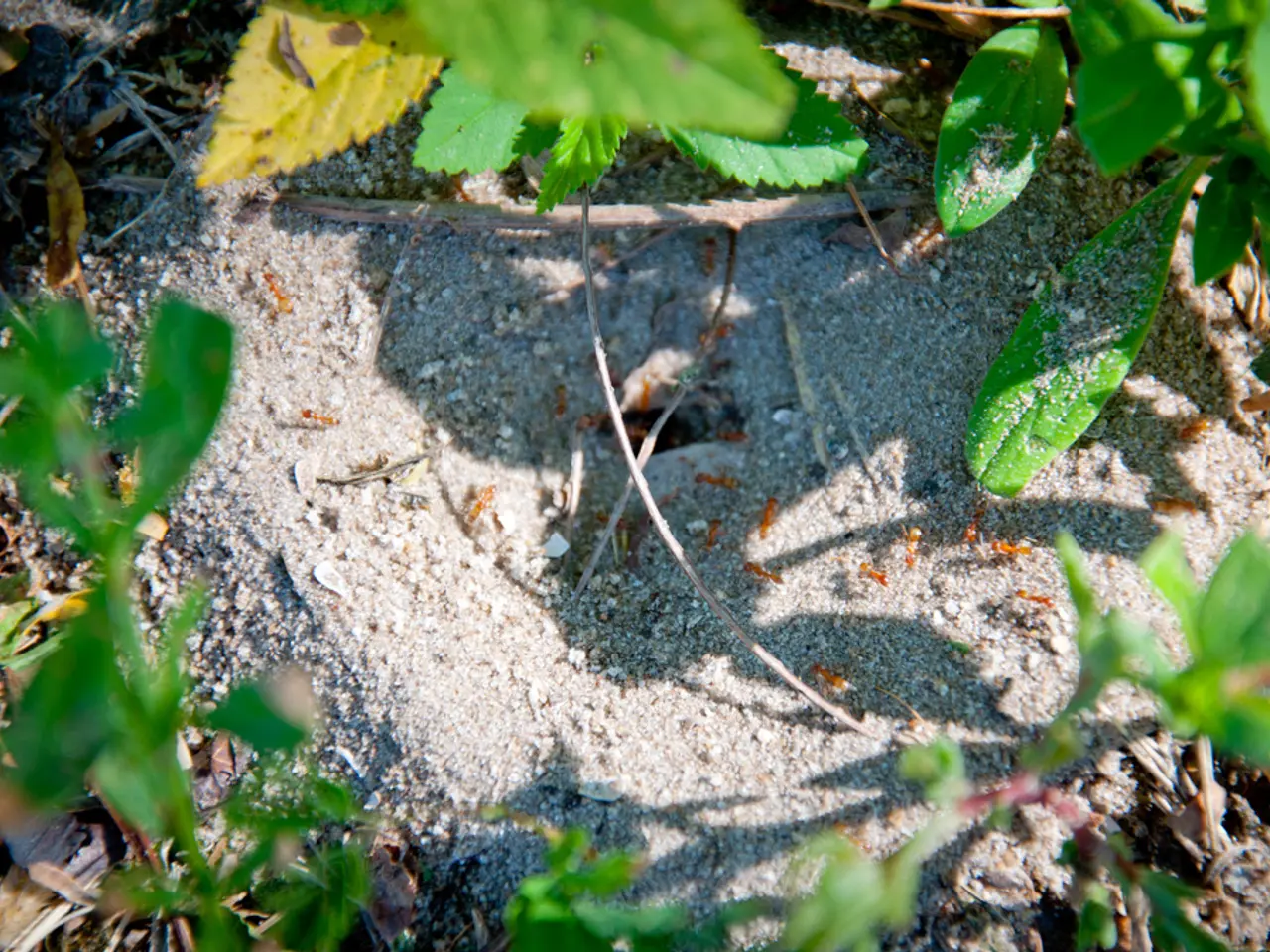Underground Fungal Farms Tended by Leafcutter Ants: A Prehistoric Form of Agriculture
Leafcutter Ants: The Ancient Agricultural Pioneers
Leafcutter ants, found predominantly in the lush rainforests of Central and South America, have been fascinating scientists for centuries due to their complex societies and unique agricultural practices. These ants offer valuable insights into the development of complex societies and sustainability, teaching us lessons about cooperation and sustainability.
The subterranean networks of leafcutter ant colonies can stretch for hundreds of feet, consisting of numerous chambers interconnected by tunnels. These underground cities house their fungal farms, a mutualistic symbiosis that has evolved over millions of years.
Leafcutter ants cultivate a special fungus as their main food source, using leaves as the primary ingredient for this cultivation. The ants cut fresh leaves, not to eat directly, but to use them as a substrate to grow the fungus in specialized underground gardens. The fungus converts the leaf material into nutrients digestible by the ants, forming an essential part of their diet.
This relationship is highly specialized and evolved about 55 million years ago, far predating human agriculture. The ants provide fresh plant material for the fungus to grow on, protect their fungal gardens by weeding out infected parts and defending against pathogens, and exhibit behaviors such as removing compromised fungus pieces when certain fungal metabolites indicate infection. The fungus, in turn, provides nutrients and sustains large ant colonies with populations in the millions.
Comparing this ancient agricultural system to human agriculture, we find remarkable parallels in agricultural principles such as substrate preparation, crop care, and pathogen management. Leafcutter ants demonstrate a form of biological farming that includes advanced cultivation, crop management, and biological pest control.
However, leafcutter ants can become agricultural pests when they target crops cultivated by humans. Their foraging activities create pathways in the forest floor, benefiting other species, but their impact on human agriculture can be detrimental.
Conservation efforts are crucial to preserving leafcutter ants and their unique ecological roles. These ants contribute to nutrient cycling within the soil, influencing plant growth, and their complex system of communication ensures that the colony functions efficiently, with each ant playing a specific role in the collective effort to sustain the fungal farms.
The story of leafcutter ants serves as a reminder of the beauty and complexity of the natural world. Their ancient agricultural practices, predating human agriculture by tens of millions of years, show how multiple species can cooperatively manage food production on a large scale. Understanding this mutualistic symbiosis can provide clues about the evolution of cooperation, division of labor, and the development of social structures in other species.
- The complex agricultural practices of leafcutter ants offer valuable insights into sustainability and the evolution of complex societies, particularly in terms of cooperation and division of labor.
- The specialist relationship between leafcutter ants and their fungal farms is an example of evolutionary biology, which has been ongoing for about 55 million years, predating human agriculture.
- In terms of environmental-science, leafcutter ants contribute to nutrient cycling within the soil, influencing plant growth and maintaining a delicate balance in the ecosystem.
- Adopting sustainable lifestyle choices, such as supporting conservation efforts, can help preserve leafcutter ant colonies, their unique role in the environment, and enhance our understanding of how multiple species can cooperatively manage food production on a large scale.




